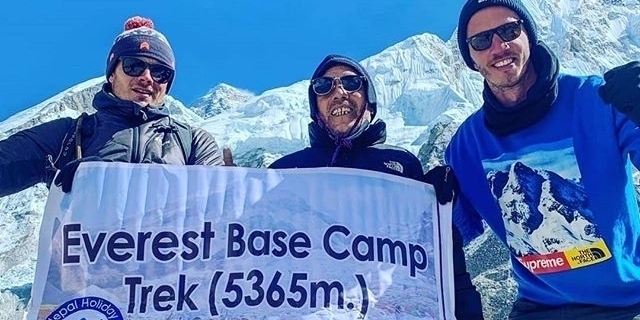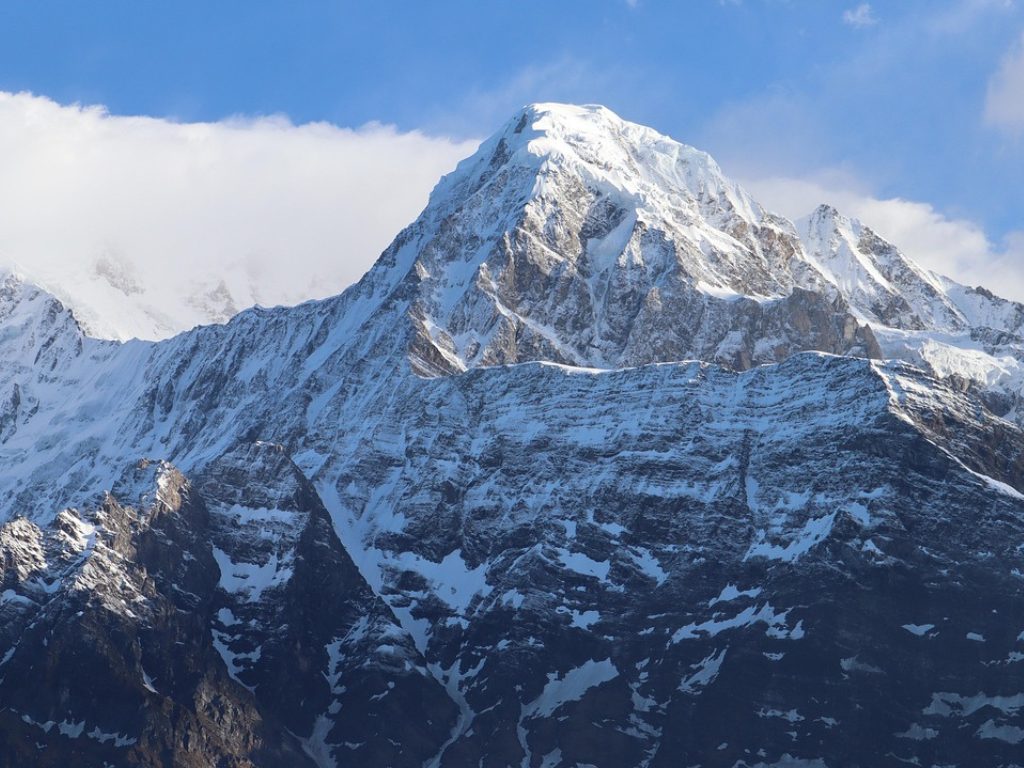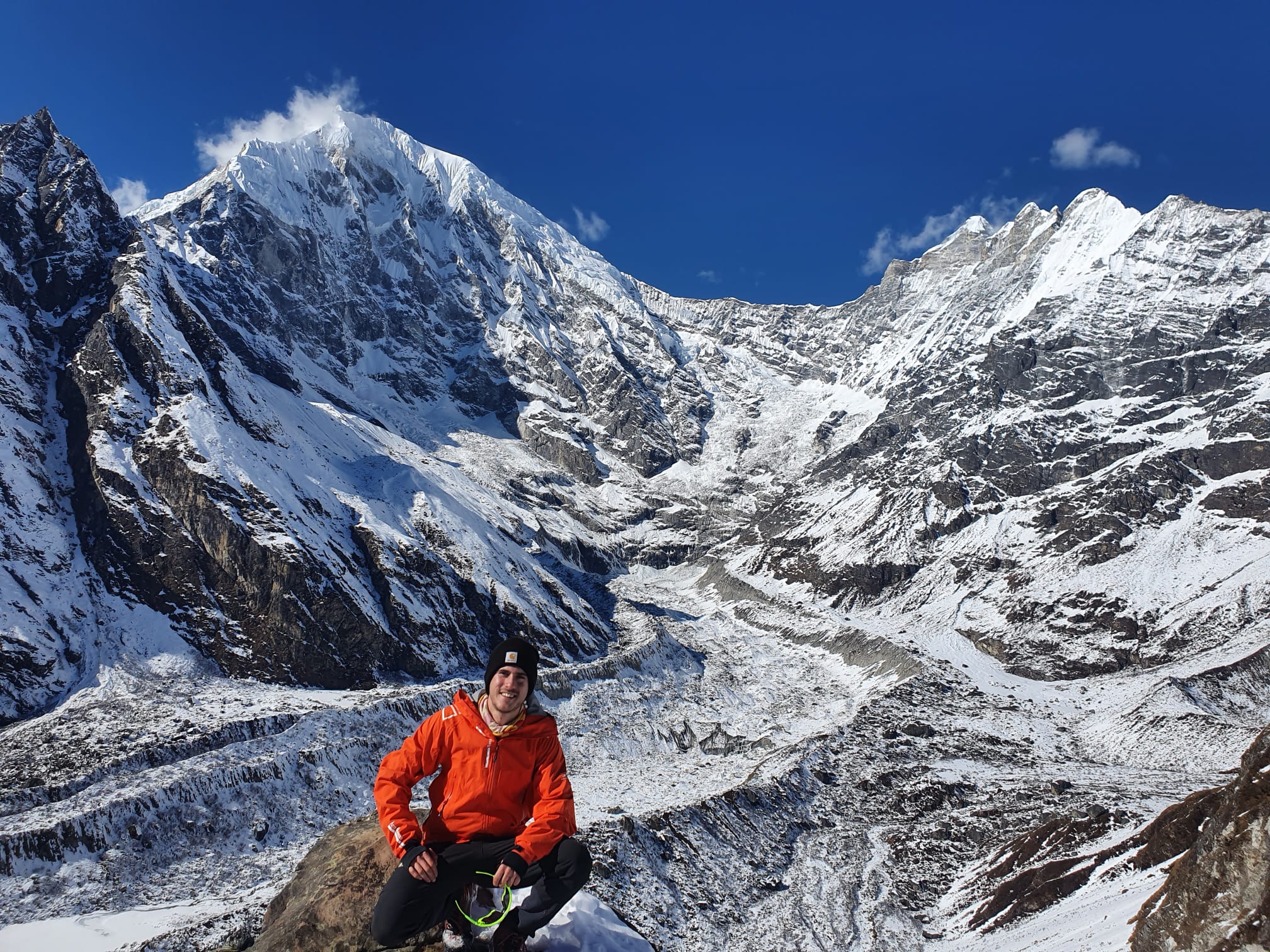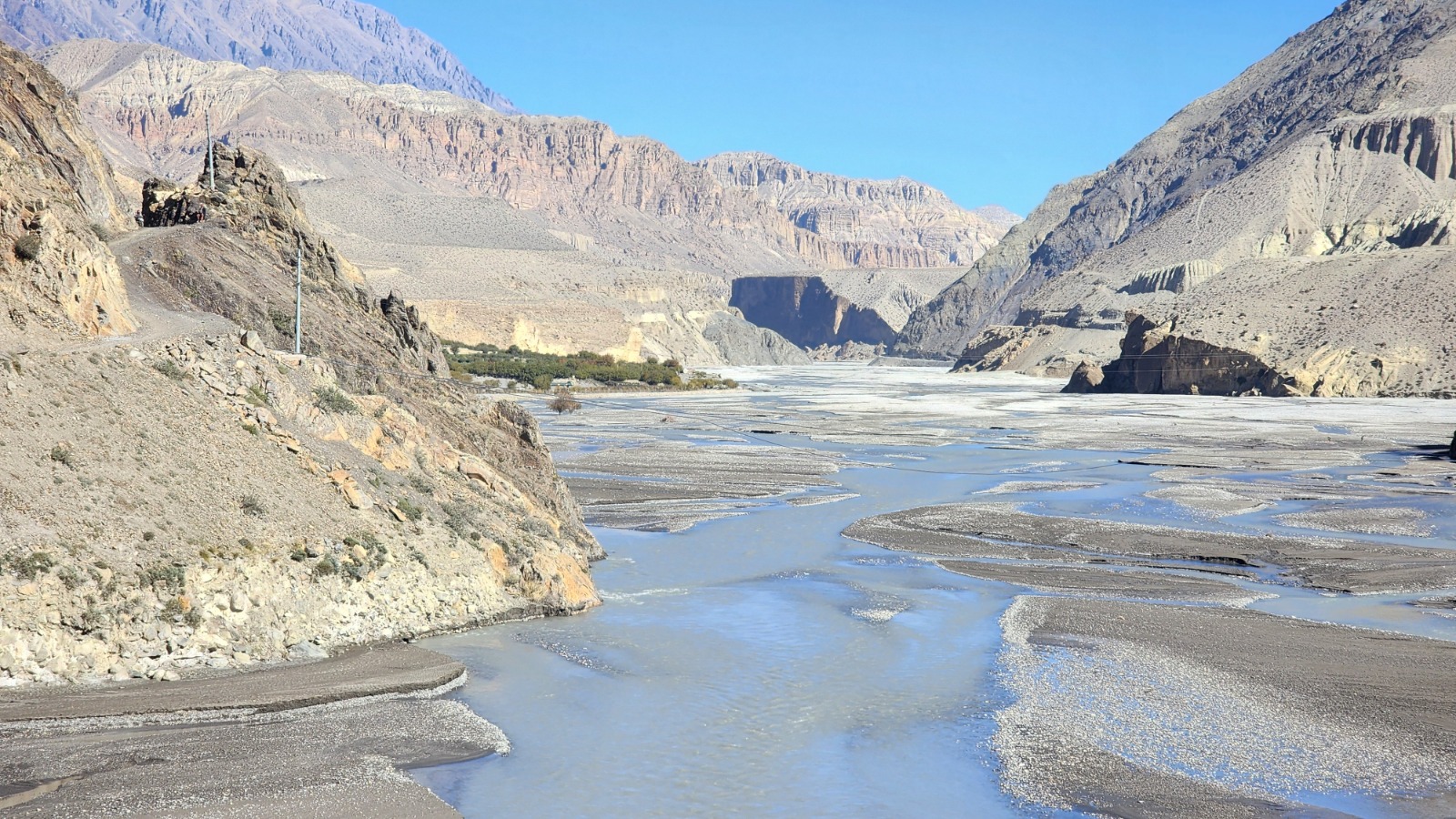Why is Everest Base Camp Trek So Popular ?
Posted by: gwtadmin on January 20, 2025
Why is Everest Base Camp Trek So Popular ?
Wank to know why is Everest Base Camp trek so popular? If yes, read this article about the major reasons why Everest Base Camp trekking is so popular.
There is no doubt that Everest Base Camp (EBC) trek is the most popular trekking route in Nepal. Annually, more than 50,000 people from all over the world flock to the Everest region to commence on a journey to the base camp of the world’s highest peak. Aside from the breathtaking scenery, travelers to the region can experience the beautiful, unique Sherpa culture by visiting the museums and monasteries along the way. While you have to go there and experience firsthand to grasp the reasons behind the popularity of this trek route, here we have listed down five awesome reasons that make this EBC a truly once-in-a-lifetime opportunity.

Lukla flight experience
Like most treks in the region, EBC commences with a flight to Lukla from Kathmandu. Although it is not the only way to access Khumbu region, it is the easiest and shortest route. The flight from Kathmandu to Lukla is also often known as the most dangerous in the world, but on a good day, when the sun is shining, this nerve-wrecking fact can be easily forgotten. Flying above the verdant hills, winding dusty tracks, picturesque scattered villages, and through wisps of cloud vapor, this flight is bound to ethereal.
Namche Bazaar
At an impressive elevation of 3,500m, Namche Bazaar is the staging point for expeditions to Everest and other mountains in the area. This popular town is also a prosperous market that sells everything from trekking and climbing equipment to exquisite Tibetan handicrafts. Situated on the slope of an arch-shaped mountain, amphitheater like Namche emanates surreal vibes and aura of Himalayan serenity. It is also the best place to witness and experience the rich and unique culture of the true mountain people – Sherpas.
The view of Everest
The view of Everest, the tallest peak in the world, is nothing short of awe-inspiring. Standing at a staggering height of 29,032 feet (8,849 meters) above sea level, Everest dominates the skyline with its majestic presence. From various vantage points, such as the base camp or higher up along the trekking routes, one can witness the grandeur of Everest and the surrounding Himalayan range. The sight of Everest’s snow-capped peak piercing the clouds is a testament to nature’s magnificence and the indomitable spirit of human exploration.
For those who undertake the arduous journey to see Everest up close, the experience is not just about the visual spectacle but also about the profound sense of accomplishment and reverence for the natural world. It’s a reminder of our own insignificance in the face of such monumental forces of nature, yet also a celebration of our capacity to seek adventure and push the boundaries of what we believe is possible.
Comfortable trekking route in Everest base Camp
One of the most comfortable trekking routes to Everest Base Camp is the classic Everest Base Camp Trek via the South Side, starting from Lukla. This route offers a good balance between accessibility, amenities, and scenic beauty. Not only are the Himalayan sceneries, but Everest Base Camp also well renowned for its comfortable trekking trails too. Well-established and marked trekking routes and never confusing paths till the ultimate point make this journey contended and enjoyable.
The fear of being lost on the way is rare. Plus numerous fellow trekkers pass each moment you just can ask them in case of confusion. Don’t worry! They are kind and helpful and show the way correctly. This route is well-established and offers tea house accommodations along the way, providing trekkers with comfortable lodging and meals. However, it’s important to be prepared for altitude-related challenges and to trek responsibly, following the guidance of experienced guides and taking necessary precautions for safety and health.
Great Combined Treks and Expeditions
This combined trek and expedition begins with the classic Everest Base Camp Trek, which takes you through picturesque Sherpa villages, rhododendron forests, and rugged mountain landscapes. Starting from Lukla, the trek gradually ascends through Namche Bazaar, Tengboche, Dingboche, and Gorak Shep, offering breathtaking views of Everest, Lhotse, Nuptse, and other Himalayan peaks along the way. After reaching Everest Base Camp and marveling at the towering icefall of the Khumbu Glacier, the expedition part of the journey begins. Trekkers make their way to Lobuche Village, where they prepare for the ascent of Lobuche East Peak (6,119 meters), a challenging but achievable climb suitable for novice climbers with some prior mountaineering experience.
The climb to Lobuche East involves technical sections, including steep snow and ice slopes, but rewards climbers with panoramic views of Everest, the Khumbu Glacier, and surrounding peaks from the summit. With the guidance of experienced Sherpa guides and ample time for acclimatization, climbers can safely reach the summit and savor the sense of accomplishment that comes with conquering a Himalayan peak. Combining the Everest Base Camp Trek with Lobuche East Climbing offers trekkers and aspiring mountaineers the opportunity to experience the best of both worlds: the renowned trek to Everest Base Camp and the exhilaration of a Himalayan summit climb. It’s a journey that provides unforgettable memories, stunning scenery, and a profound sense of achievement amidst the world’s highest peaks.
Sherpa Culture and Lifestyle
Exploring the Sherpa culture and lifestyle is a rich and rewarding experience that adds depth to any trek or expedition. The Sherpas are an indigenous ethnic group native to the Himalayan region of Nepal, known for their resilience, mountaineering prowess, and rich cultural heritage. As you trek through the Khumbu Valley towards Everest Base Camp, you’ll encounter Sherpa villages nestled amidst the towering peaks. These villages, including Namche Bazaar, Khumjung, and Tengboche, offer insights into Sherpa culture and traditions.
Sherpa culture is deeply rooted in Tibetan Buddhism, and you’ll notice colorful prayer flags fluttering in the mountain breeze and intricately carved mani stones inscribed with Buddhist mantras along the trails. Monasteries, such as the famous Tengboche Monastery, serve as spiritual centers where Sherpas gather for religious ceremonies and festivals, including Mani Rimdu, Dumje, and Losar.
The Tengboche Monastery
The Tengboche Monastery, also known as Dawa Choling Gompa, is one of the most significant monasteries in the Everest region and a focal point for spiritual and cultural activities.: The monastery was originally founded in 1916 by Lama Gulu, but it was destroyed by an earthquake and later rebuilt in 1934. Over the years, Tengboche Monastery has undergone several renovations and expansions, becoming a prominent center of Tibetan Buddhism in the Khumbu region.Tengboche Monastery hold great spiritual significance for Sherpas and Tibetan Buddhists. It is the leading monastery of the Khumbu region and serves as the religious and cultural hub for the local Sherpa community. Monks residing in the monastery conduct daily rituals, prayers, and ceremonies, including the famous Mani Rimdu festival, a colorful and elaborate religious celebration held annually in the autumn.
The monastery’s architecture is a blend of traditional Tibetan and Sherpa styles, characterized by whitewashed walls, intricately carved wooden beams, and colorful frescoes depicting Buddhist deities and symbols. The main prayer hall, known as the Du-khang, houses a large statue of Buddha and various religious artifacts. Trekkers on the Everest Base Camp route often visit Tengboche Monastery to experience its spiritual ambiance and enjoy panoramic views of the surrounding mountains. The monastery is accessible via a scenic trek from Namche Bazaar, typically taking around 5-6 hours. Visitors are welcome to observe prayer ceremonies and explore the monastery grounds, but it’s important to respect local customs and guidelines. Aside from its religious significance, Tengboche Monastery offers stunning panoramic views of some of the world’s highest peaks. The sight of Everest, Ama Dablam, and other Himalayan giants from the monastery’s vantage point is truly awe-inspiring, making it a highlight of any trek in the Everest region. A visit to Tengboche Monastery provides trekkers with a glimpse into the spiritual heart of the Everest region and offers a serene and memorable experience amidst the grandeur of the Himalayas.
Sagarmatha National park
Sagarmatha National Park boasts remarkable biodiversity. The park is home to diverse ecosystems, including temperate forests of pine, birch, and rhododendron; alpine meadows dotted with wildflowers; and high-altitude barren landscapes. It supports a variety of wildlife, including elusive snow leopards, Himalayan tahrs, musk deer, and over 200 species of birds. In addition to its natural wonders, Sagarmatha National Park is steeped in cultural heritage. The region is inhabited by the Sherpa people, renowned for their mountaineering prowess and rich cultural traditions. Visitors can explore traditional Sherpa villages, monasteries, and ancient Buddhist stupas, gaining insights into the local way of life and spiritual practices.
Sagarmatha National Park is a trekker’s paradise, offering some of the most iconic trekking routes in the world. The Everest Base Camp Trek, which winds its way through picturesque Sherpa villages, rhododendron forests, and high mountain passes, is the most popular trekking route in the park. Other notable trails include the Gokyo Lakes Trek, Three Passes Trek, and Everest View Trek, each offering unique perspectives of the Himalayan landscape. For mountaineers, Sagarmatha National Park presents unparalleled opportunities to conquer some of the world’s highest peaks. Mount Everest, standing at 8,848 meters (29,029 feet), is the ultimate challenge, drawing climbers from around the globe. Other notable peaks within the park include Lhotse, Nuptse, Ama Dablam, and Cho Oyu, offering a range of climbing experiences for both seasoned mountaineers and aspiring climbers.
Related Blogs

Trekking in Nepal | Is Nepal Safe for Trekking?
Overview of Is Nepal Safe for Trekking? Nestled in the lap of the Himalayas, Nepal is a dream destination for trekkers around the globe. With iconic routes like the Everest Base Camp, Annapurna Circuit, and hidden gems like the Tsum Valley or Mardi Himal, it’s no wonder that thousands arrive each year with hiking boots […]

Why Do Smart Trekkers Choose Small Groups 2025 /2026 ?
Why smart trekkers choose small groups? When dreaming of that perfect trek – breathtaking views, serenity, a touch of adventure, and some bonding – do you imagine yourself with a crowd or with a few like-minded souls? The real trekkers will admit: for them, the best trekking happens in small groups. There are so many […]

Mustang Travel Guide 2025 : What No One Tells You
A hidden treasure in Nepal for adventure travelers and cultural buffs, Mustang, or the Forbidden Land, lies in the rain shadow of the mighty Himalayas. The Mustang region has two different divisions: Upper Mustang and Lower Mustang with Lo Manthang, city, as the capital of the Mustang kingdom. Lower Mustang in Nepal includes the villages […]

